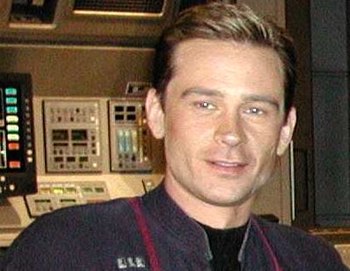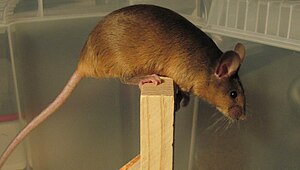Review – The Light
Light shines throughout the galaxy.
The Elevator Pitch
I have been working in the corporate world, in some capacity or another since 1986. Frankly, it was even before that, as I would temp as a college and Law School student in order to make some summer spending money.
One of the things I have perfected over the years is what’s called an Elevator Pitch. The gist of an elevator pitch is that you have the time of an elevator ride (e. g. thirty seconds to two minutes, tops) to make your pitch to a prospect employer who you, presumably, meet serendipitously in an elevator.
This means that you need to strip your resumé and work history down to bare bones. A doctor, for example, can’t go into the details of some operation she performed last year. Instead, she says something like, “I’m an orthopedic surgeon specializing in sports medicine. The Boston Celtics call on me when their medical staff is stumped.” In a very short amount of time, you get a very good idea of what this woman can do, and how trusted she is in the medical establishment.
For Star Trek fanfiction writing, I think there is a need for what is essentially the equivalent of an elevator pitch. That is, it should be a short piece which accurately gives the reader a taste of your universe, your ideas and what you can do. The Light is one such story.
History of the Story
This Star Trek:Enterprise fanfiction story did not set out to be that way. Instead, I was in the middle of spinning out Reversal (pretty close to the end) when in late 2010 I was asked to provide a story for a project called the Trek Twelve Days of Christmas. The only catch was that the story had to be fairly short – that is, it could not be a full-fledged book like Reversal.
I hit upon an idea. There would be some characters from Reversal, but really only minor ones, and the story would revolve around them. It ended up being just one of the minor characters from that story. And, the kicker, because you can find scads of Star Trek holiday stories about Christmas, this one would, instead, be about Chanukah.
Spirituality
I am, as they say, a nice Jewish gal. And people like William Shatner and Leonard Nimoy, but also Armin Shimerman, connect to Star Trek and are Jewish. Plus there are things like the Vulcan salute, and various space episodes centering around World War II, such as TOS’s Patterns of Force. Judaism is a part of Star Trek. But how to add it in, particularly without being overly preachy?
I hit upon the idea of Jews who are somewhat religious but not so much that they cannot function on a starship. That is, they have to, for example, be able to travel on the Sabbath. This means Orthodox Jews are out of the question. But Conservative Jews (which is my background; this references a sect and not a political affiliation) would work just fine for my purposes.
Chanukah was a natural introduction as a lot of people are familiar with it. The celebration, a festival of lights, also includes foods made with oil, such as potato latkes (pancakes), spinning a top called a dreidel and exchanging presents. The candelabra is called a menorah.
Bereavement
In order to add a little emotional heft to the story, and to explain why Captain Archer and the senior staff would be interested in the Jewish contingent on the ship, the story begins with a death. This link to the past also links us, the people of the present day, to the people on the NX-01.
The Plot
The story begins with an Admiral telling Captain Archer than Crewman Ethan Shapiro‘s great-aunt, Rachel Orenstein, has died. Jonathan wonders why the crewman’s family wouldn’t just tell him and the Admiral says they won’t communicate during the Sabbath. Jonathan presses the matter, still not convinced that he’s the best man for the job when the Admiral tells him to act quickly, as this is a major news story. Why? Because Rachel lived for one hundred and twenty-seven years (which places her birth in 2029). She broke all previous records and, therefore, the press has an interest in her family.
As Jonathan informs Ethan of the death, Ethan asks for leave for the unveiling of the head stone, explaining that the funeral will be too quick for him to ever get back to Earth in time. He also asks to be connected to the Starfleet Rabbi, Leah Benson.
Support
He returns to his quarters and waits for his friends. Lieutenant Reed comes by briefly, in order to offer his condolences as he is Ethan’s boss. The other three Jewish crew members arrive – Josh Rosen, who is in Engineering; Karin Bernstein, who works with Ethan in the Tactical Department; and Andrew Miller, who works in the Biology Lab and is half-Jewish. Andy is perhaps a year older than the others.
When they speak with the Rabbi, they ask how they are ever going to get a minyan together. In order to say Kaddish (the prayer over the dead), ten Jews must be present. Karin’s presence counts (that wasn’t the case when I was a child), but then what? There are only four Jews on the ship. The Rabbi tells them that they can temporarily deputize some non-Jewish friends.
When the time comes for mourning, Captain Archer brings along some friends to help. These include Hoshi who, when asked if she can read Hebrew jokes, “I’ll muddle through”, Malcolm, Phlox, T’Pol and a Security Crewman, Azar Hamidi. Azar notes that Hebrew can’t be too far off from Arabic. They say the prayers.
Celebration
Ethan’s mother – who tells him to talk to that nice girl Karin a bit – insists that he celebrate Chanukah. So he invites all of the attendees at the service to a little party on the next night. The party is in the Observation Lounge. Like all good parties, there’s a little dancing, a gift, good food to eat, and there’s a little bit of romance.
Story Postings
- This ezine, pages 6 – 12 only.
- The Light on Ad Astra (contains reviews)
- also, The Light on TrekBBS
- The Light on FanFiction.net
- The Light on Fictionpad
- in addition, The Light on Wattpad
- The Light on G & T Show forums
- plus, The Light in context
Rating
The story is rated K.
Upshot
For the most part, I like it. There is a bit of shtick, though, particularly when Ethan and his mother talk. I could have probably trimmed that a bit, as Linda Shapiro comes across as a bit of a stereotype. But I do like using this story – which only contains a little over 3200 words – as one possible elevator pitch when people ask me how they can get an inkling of how I write. For a positive, K-rated peek at my world, read The Light.
And what happens to Ethan, Karin, Andy, Josh and Azar? To find out about them, and even about their Mirror Universe counterparts, there’s more in the In Between Days series, and even a little bit in the Times of the HG Wells series.























.jpg?resize=241%2C194)





